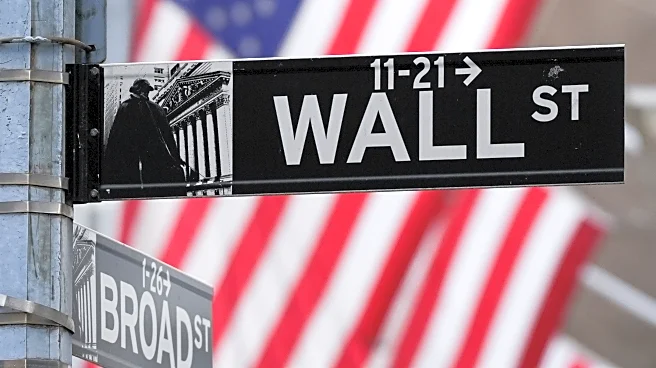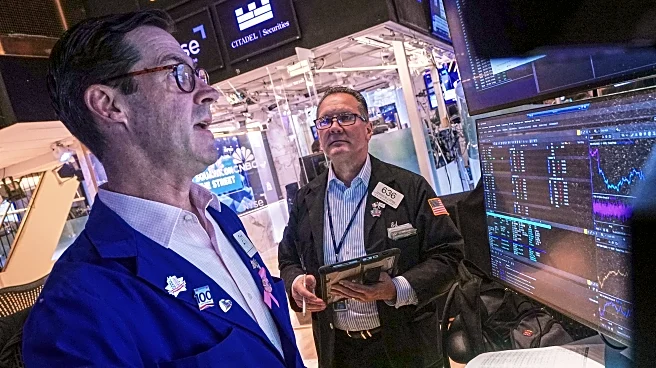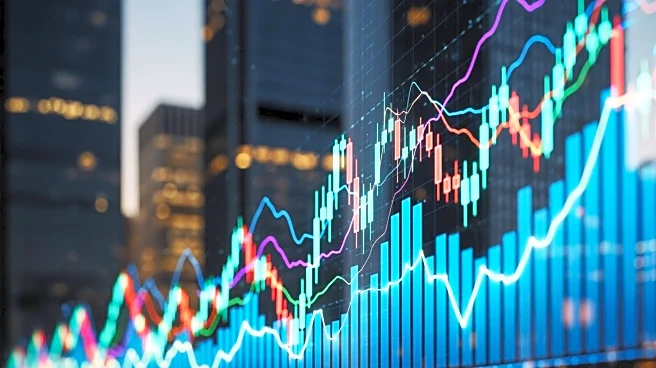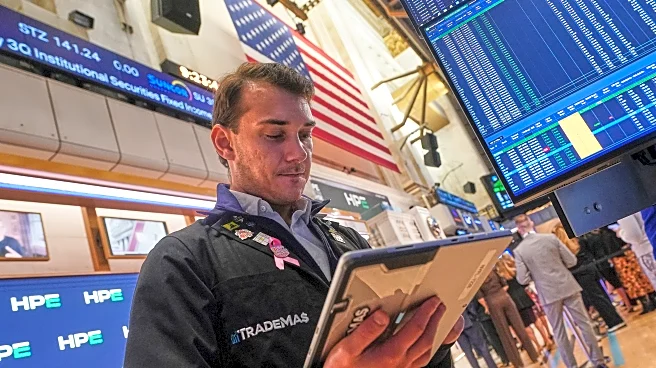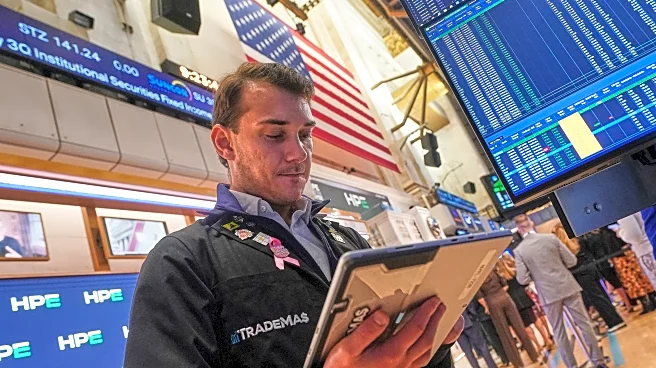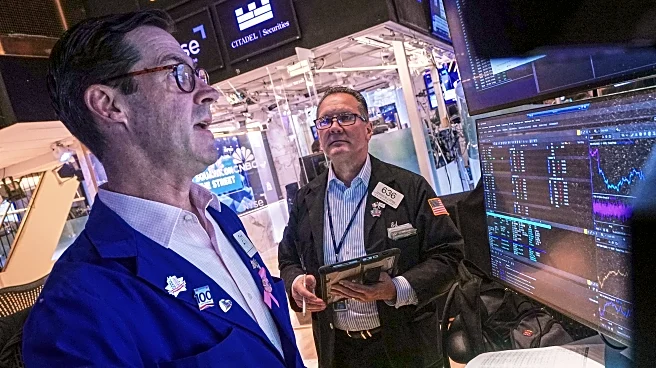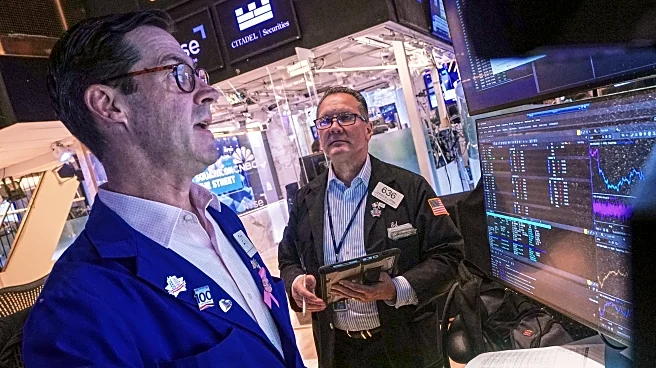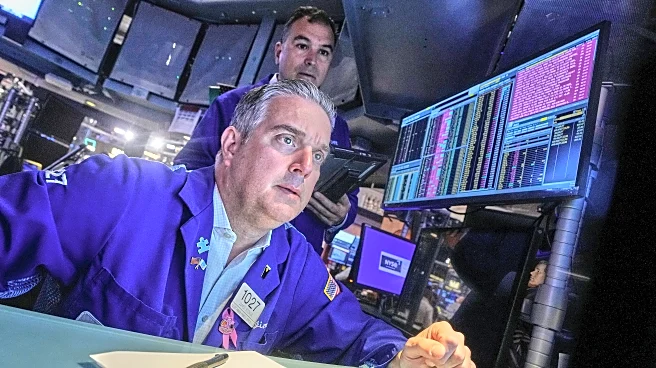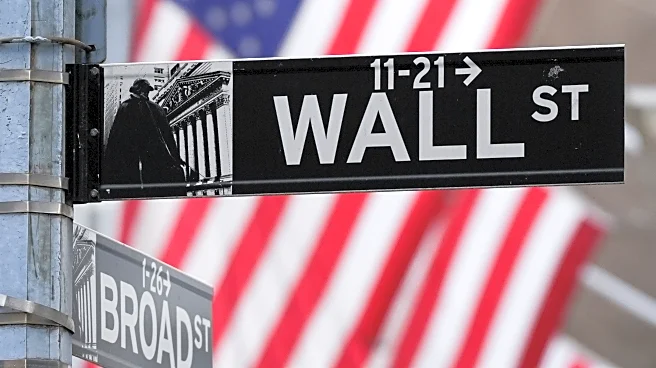What's Happening?
On October 15, U.S. equity markets experienced significant volatility, with the Dow Jones Industrial Average erasing a 400-point gain to close down 30 points, or 0.07%. The S&P 500 managed a modest gain of 27 points, or 0.42%, while the Nasdaq index rose
148 points, or 0.66%. Analysts attribute the market fluctuations to strong third-quarter financial results from major banks like Morgan Stanley and Bank of America. However, ongoing U.S.-China trade tensions and a government shutdown, costing the economy $15 billion daily, continue to unsettle investors. The Cboe Volatility Index, known as Wall Street's 'fear gauge,' reached 20.7, its highest since May. Despite the Nasdaq's rise, AI stocks like Nvidia struggled, with Nvidia's shares closing slightly lower after earlier gains.
Why It's Important?
The volatility in U.S. stock markets reflects broader economic uncertainties, particularly concerning international trade relations and domestic political issues. The government shutdown's financial impact underscores the urgency for resolution, affecting economic stability and investor confidence. The rise in the Cboe Volatility Index indicates heightened market anxiety, prompting investors to seek safe-haven assets like gold, which hit a record high. The performance of major banks suggests resilience in certain sectors, but the struggles of AI stocks highlight challenges in tech industries. These dynamics could influence investment strategies and economic forecasts, affecting stakeholders across various sectors.
What's Next?
Investors and analysts will closely monitor developments in U.S.-China trade negotiations and efforts to resolve the government shutdown. The continuation of these issues could further impact market stability and investor sentiment. Additionally, upcoming economic data releases and corporate earnings reports will be critical in assessing the market's direction. Stakeholders may adjust strategies based on these factors, with potential implications for stock valuations and sector performance. The focus will also be on safe-haven assets, as market participants seek stability amid uncertainty.
Beyond the Headlines
The current market volatility highlights deeper concerns about the U.S. economic landscape, including the impact of political decisions on financial markets. The government shutdown not only affects immediate economic output but also raises questions about governance and fiscal responsibility. The trade tensions with China reflect broader geopolitical challenges that could reshape global economic relations. These issues may lead to long-term shifts in investment patterns and economic policies, influencing the future trajectory of U.S. markets.


